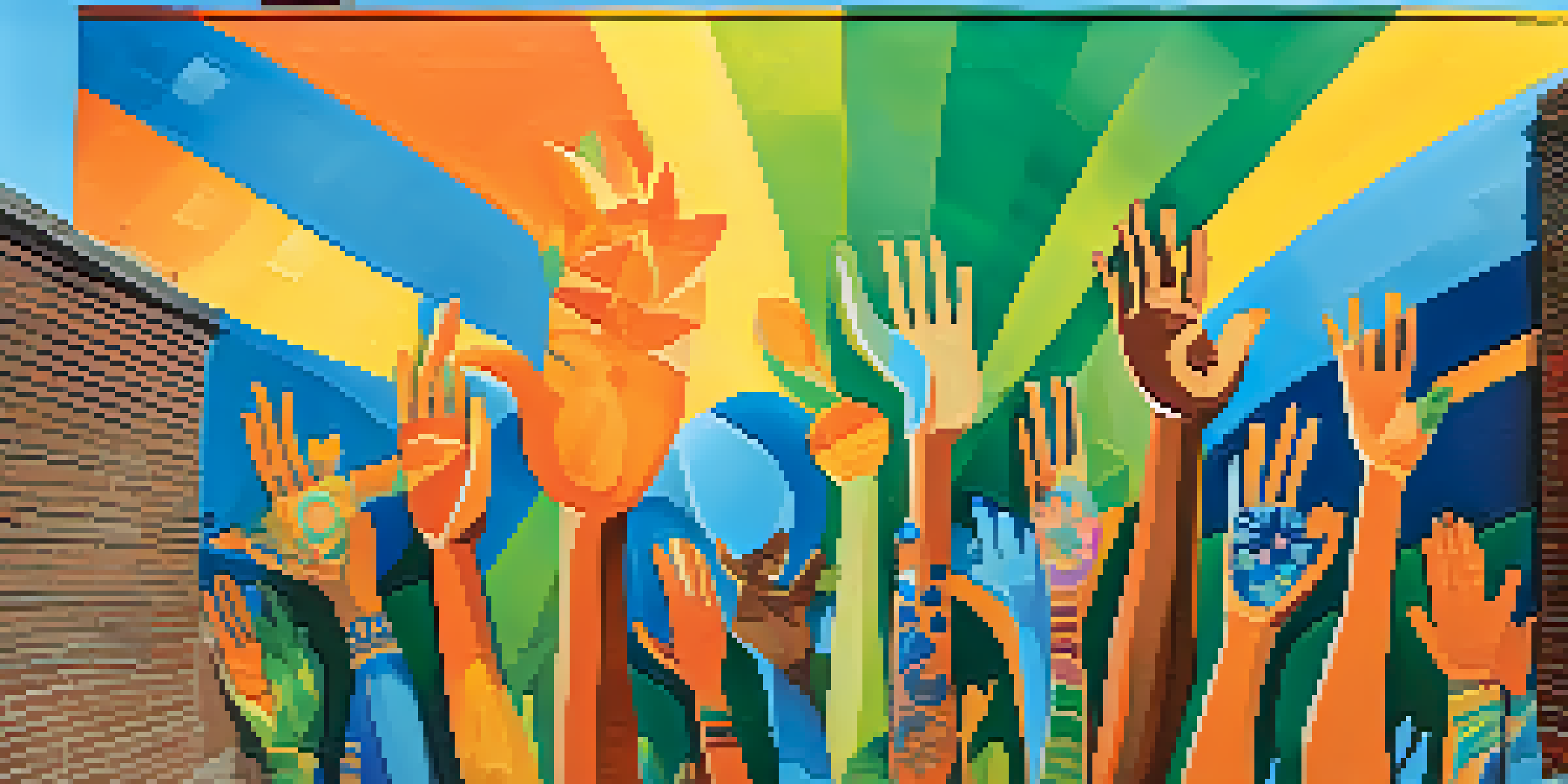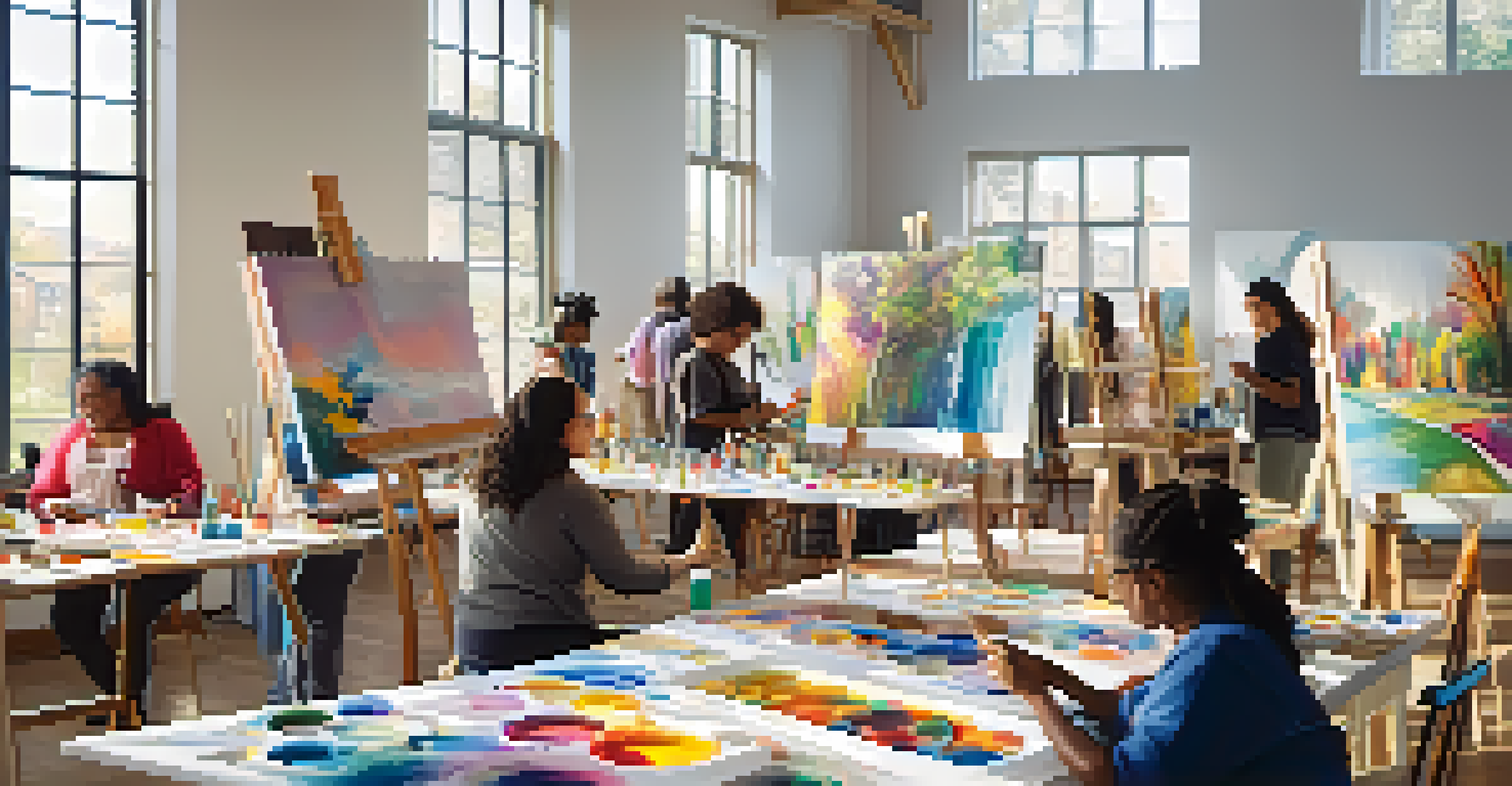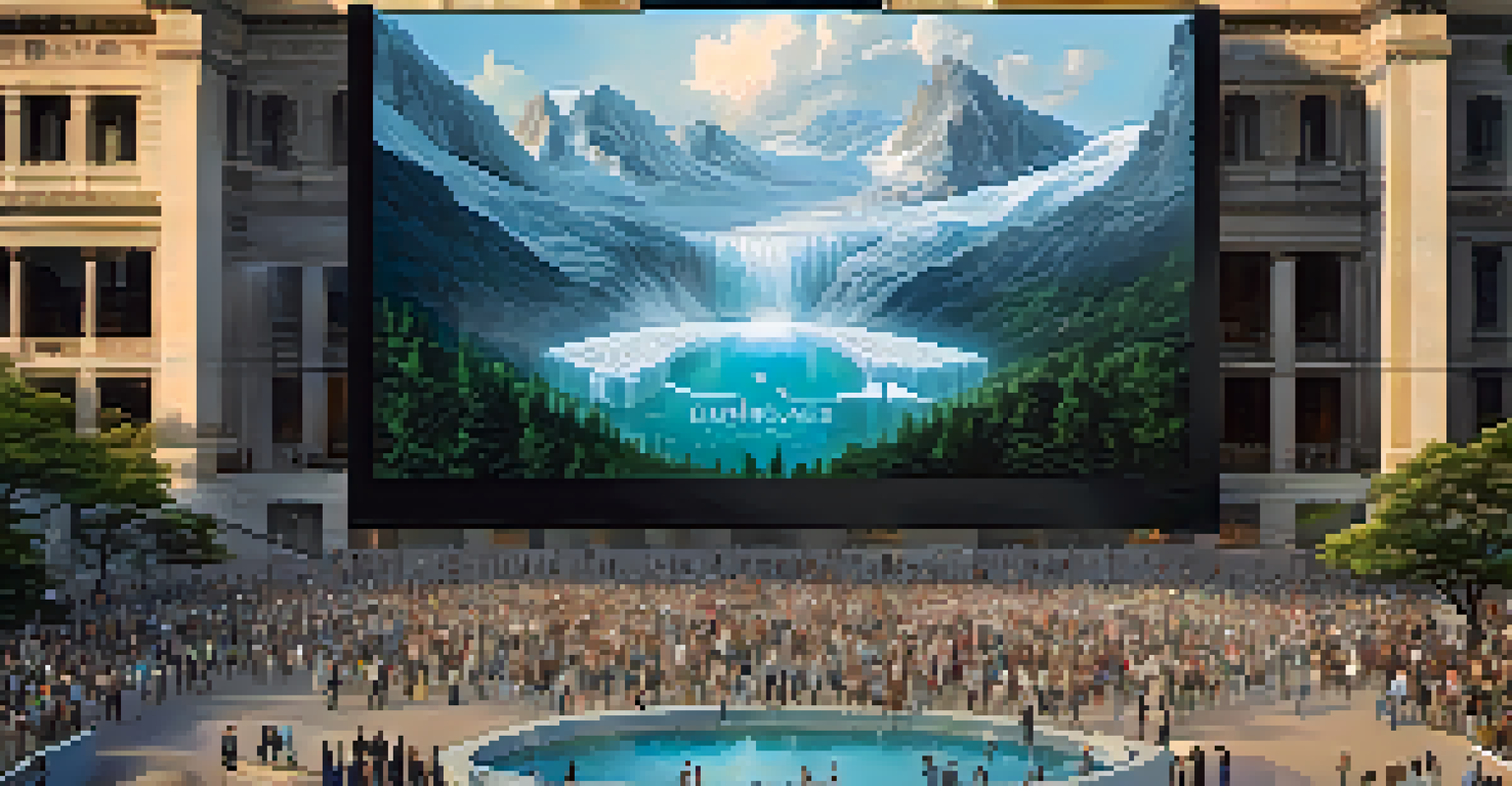Art and Activism: Stories from the Frontlines of Change

Art as a Catalyst for Social Change
Art has a unique ability to resonate with emotions, making it a powerful tool for social change. Whether through paintings, performances, or street art, creative expressions can amplify voices that might otherwise go unheard. Artists often use their platforms to highlight injustices and inspire action, bridging gaps between communities and sparking conversations.
Art is the most beautiful of all lies.
For instance, consider the murals that emerged during the Black Lives Matter movement. These vibrant displays of creativity not only beautified cityscapes but also served as poignant reminders of the struggles faced by marginalized communities. By turning walls into canvases, artists transformed public spaces into forums for dialogue and reflection, engaging passersby in meaningful ways.
Ultimately, art invites us to question the status quo and envision a better future. Through storytelling and visual representation, it encourages us to feel deeply and act boldly, making it an indispensable ally in the quest for social justice.
Historical Perspectives on Art and Activism
Throughout history, artists have played vital roles in movements for change, often at great personal risk. From the politically charged works of Diego Rivera to the powerful photography of Gordon Parks, art has chronicled the struggles and triumphs of various social movements. These historical narratives remind us that the intersection of art and activism is not a new phenomenon.

Take the Harlem Renaissance, for example, where artists, musicians, and writers used their crafts to celebrate Black identity and challenge racial discrimination. This cultural explosion not only shaped the perception of African American art but also laid the groundwork for future generations of activists. The legacy of this period continues to inspire current artists who strive to evoke change through their work.
Art Amplifies Voices for Change
Art serves as a powerful medium to highlight injustices and inspire community dialogue, making it an essential tool for social change.
Understanding this history gives context to today’s movements, showing how art can serve as both a mirror and a megaphone for societal issues. It reinforces the idea that the fight for justice is ongoing and that creative expression remains a vital component of this struggle.
Modern Artists Leading the Charge
In today's landscape, many artists are at the forefront of activism, using their talents to advocate for various causes. For instance, artists like Ai Weiwei have used their work to challenge governmental oppression and human rights violations. His installations often provoke thought and inspire action, reminding us of art's power to confront difficult truths.
The role of the artist is to make the revolution irresistible.
Similarly, the work of Banksy, with its satirical edge, invites viewers to reflect on issues such as consumerism, war, and inequality. His ephemeral street art not only captures public attention but also generates conversations around pressing social issues. By making art accessible in public spaces, he democratizes the dialogue surrounding activism.
These modern artists exemplify how creativity can be a form of resistance. Their works serve as reminders that art is not just for galleries; it can inhabit the streets and spark movements, making it a dynamic force for change.
The Role of Community in Artistic Activism
Community plays a pivotal role in the intersection of art and activism. Local artists often collaborate with grassroots organizations to create projects that reflect the needs and aspirations of their communities. This collaboration ensures that the art is relevant and resonates with those who experience the issues firsthand.
For example, community murals can transform neglected spaces into vibrant areas of expression and healing. These collaborative projects not only beautify neighborhoods but also foster a sense of ownership and pride among residents. When people come together to create, they build connections that empower them to enact change.
Community Collaboration Empowers Art
Collaborative art projects reflect the needs of communities, fostering ownership and pride while driving local activism.
By engaging communities in the artistic process, activists ensure that their messages are authentic and impactful. This participatory approach highlights the collective power of art to inspire unity and action, reminding us that change often begins at the local level.
Digital Art and Activism in the Modern Age
In the digital age, technology has transformed how art and activism intersect. Social media platforms provide artists with a global stage to share their work and mobilize support for various causes. This accessibility allows for rapid dissemination of messages, making it easier for movements to gain traction and reach wider audiences.
For instance, the viral nature of digital art can amplify the impact of a single piece, as seen in the online campaigns surrounding climate change. Artists harness the power of visuals to create compelling content that resonates with viewers, turning abstract concepts into relatable narratives that inspire action. Hashtags and online challenges further engage audiences, creating a sense of community around shared goals.
However, this also comes with challenges, as the saturation of content can dilute messages. Artists must navigate this landscape thoughtfully, ensuring their work cuts through the noise and drives meaningful dialogue. Ultimately, digital art continues to redefine activism, proving that creativity knows no boundaries.
Art as a Tool for Healing and Reflection
Art not only advocates for change but also serves as a powerful tool for healing and reflection in communities affected by trauma. Creative expression can help individuals process their experiences and share their stories, fostering a sense of connection and understanding. Whether through visual arts, music, or writing, the act of creating can be profoundly therapeutic.
In many cases, community art projects are designed specifically to address collective trauma, allowing participants to explore their feelings in a safe space. For example, workshops that encourage storytelling through art can empower individuals to reclaim their narratives and share their journeys. This process is not only healing for the creators but also enlightening for audiences who witness these stories.
Digital Platforms Transform Activism
In the digital age, technology enhances the reach of artistic activism, allowing artists to mobilize support and create impactful narratives globally.
By facilitating dialogue around difficult topics, art promotes empathy and encourages a culture of understanding. It reminds us that while activism seeks to change systems, healing is equally important in building resilient communities ready to advocate for their rights.
Future Directions: The Evolution of Art and Activism
As we look ahead, the relationship between art and activism is likely to evolve in fascinating ways. Emerging technologies, such as virtual and augmented reality, offer new platforms for immersive artistic experiences that can engage audiences on deeper levels. This evolution presents exciting opportunities for artists to explore innovative ways to tell their stories and advocate for change.
Moreover, the rise of global connectivity means that artists can collaborate across borders, creating a rich tapestry of perspectives and ideas. This cross-pollination of cultures can lead to powerful movements that resonate on an international scale, amplifying local causes and drawing attention to global issues. The potential for art to unite people around shared values and visions is limitless.

Ultimately, the future of art and activism will be shaped by the creativity and resilience of those committed to making a difference. By embracing new mediums and fostering collaboration, artists can continue to inspire change and cultivate hope in an ever-changing world.